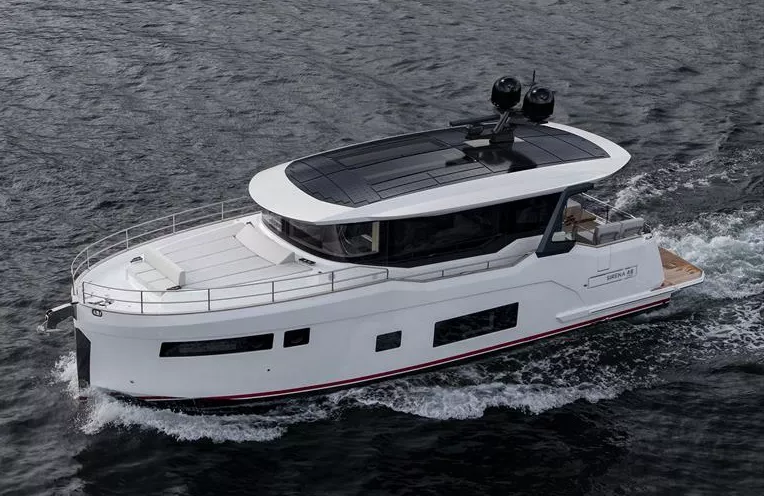Crossing the Atlantic Ocean in a motor yacht is a formidable endeavor that has intrigued maritime enthusiasts for decades. While sailing yachts have traditionally been the vessels of choice for such voyages, advancements in motor yacht design and technology have made transatlantic crossings increasingly feasible. This article delves into the factors that influence the capability of motor yachts to undertake such journeys, including yacht design, fuel capacity, range, and safety considerations. Additionally, we will explore notable transatlantic voyages that have showcased the potential of motor yachts in conquering the vast Atlantic.
Yacht Design and Fuel Capacity
Hull Design and Efficiency
The hull design of a motor yacht is paramount in determining its suitability for long-distance ocean crossings. Yachts with displacement or semi-displacement hulls are generally more appropriate for such voyages due to their inherent stability and fuel efficiency. These hull types allow the yacht to move smoothly through the water, minimizing resistance and conserving fuel. In contrast, planing hulls, while capable of higher speeds, are less fuel-efficient and may not offer the necessary range for transatlantic travel.
Fuel Capacity and Range
A motor yacht’s fuel capacity directly influences its range—the distance it can travel without the need for refueling. For a successful Atlantic crossing, a yacht must possess sufficient fuel capacity to cover approximately 3,000 nautical miles, the typical distance between the East Coast of the United States and Western Europe. Yachts designed for long-range cruising often feature larger fuel tanks and efficient engines to maximize their range. For instance, the wave-piercing catamaran Sampitres, launched in 2002, boasts a range of 3,490 nautical miles, making it capable of transatlantic travel.
Notable Transatlantic Voyages
The Record-Breaking Voyage of Destriero
In 1992, the Italian motor yacht Destriero set a remarkable record by crossing the Atlantic without refueling. Measuring 67 meters in length and equipped with three gas turbines totaling 60,000 horsepower, Destriero achieved an average speed of 53.09 knots over a distance of 3,106 nautical miles, completing the voyage in 58 hours, 34 minutes, and 5 seconds. Despite this extraordinary feat, Destriero was denied the Hales Trophy, as it was classified as a private yacht rather than a commercial passenger vessel. Nevertheless, the vessel was awarded the Virgin Atlantic Challenge Trophy, recognizing the fastest crossing by any vessel.
The Ambitious Attempt of Gentry Eagle
In 1989, American businessman Tom Gentry made a notable attempt to reclaim the transatlantic speed record with his 110-foot powerboat, Gentry Eagle. The vessel, powered by a combination of diesel engines and a gas turbine totaling 11,500 horsepower, completed the crossing in 62 hours and 7 minutes, averaging a speed of 47.4 knots. This achievement surpassed the previous record held by Richard Branson’s Virgin Atlantic Challenger II, highlighting the advancements in motor yacht capabilities during that era.
The Expedition of The Beast
In 2019, the 39-meter expedition catamaran The Beast, designed by LOMOcean Marine, embarked on a transatlantic voyage. Built for owners Sir Michael Hill and Lady Christine Hill, The Beast features a large-volume displacement catamaran hull with high tunnel clearance, providing stability and efficiency for long-distance travel. The yacht accommodates up to 12 guests plus crew and won the 2020 World Superyacht Award for Displacement Motor Yachts Below 499GT 30m to 39.9m, showcasing its capability for extended ocean crossings.
Factors Influencing a Successful Crossing
Weather Conditions
The Atlantic Ocean is notorious for its unpredictable weather patterns, including storms and rough seas. Planning a crossing during favorable seasons and meticulously monitoring weather forecasts are essential to ensure safety and comfort. The optimal time for a transatlantic voyage is typically between May and September, when the likelihood of encountering severe weather is reduced.
Crew Experience
A knowledgeable and experienced crew is vital for a successful transatlantic voyage. Handling a motor yacht in open ocean conditions requires expertise in navigation, engine maintenance, and emergency procedures. Crew members should be well-versed in operating advanced navigation systems, understanding weather patterns, and performing routine maintenance to address any mechanical issues that may arise during the journey.
Safety Equipment
Equipping the yacht with appropriate safety gear is crucial for the well-being of all on board. Essential safety equipment includes life rafts, emergency beacons (EPIRBs), satellite communication devices, and comprehensive medical kits. Regular safety drills and maintenance checks further enhance preparedness for unforeseen situations, ensuring that both the crew and the vessel are ready to handle emergencies.
Modern Advancements and Considerations
Technological Innovations
Advancements in navigation systems, weather forecasting, and communication technologies have significantly improved the safety and feasibility of long-distance yacht voyages. Modern motor yachts are equipped with state-of-the-art systems that assist in route planning and real-time decision-making. Satellite-based navigation and communication systems enable constant contact with shore-based support teams, providing up-to-date weather information and emergency assistance if needed.
Environmental Impact
Environmental considerations are increasingly important in yacht design and operation. Utilizing cleaner fuels, incorporating waste management systems, and adhering to international environmental regulations contribute to more sustainable ocean crossings. Yacht designers and owners are now focusing on reducing the carbon footprint of their vessels by implementing energy-efficient technologies and sustainable practices.
Conclusion
Crossing the Atlantic in a motor yacht is a challenging yet achievable endeavor, given the right vessel, meticulous planning, and an experienced crew. Notable voyages, such as those undertaken by Destriero, Gentry Eagle, and The Beast, highlight the advancements in yacht design and technology that make such crossings possible. Prospective voyagers must carefully consider factors like yacht design, fuel capacity, weather conditions, and safety measures to ensure a successful and rewarding transatlantic journey.

